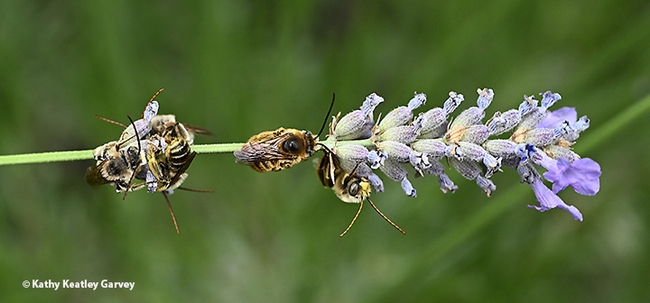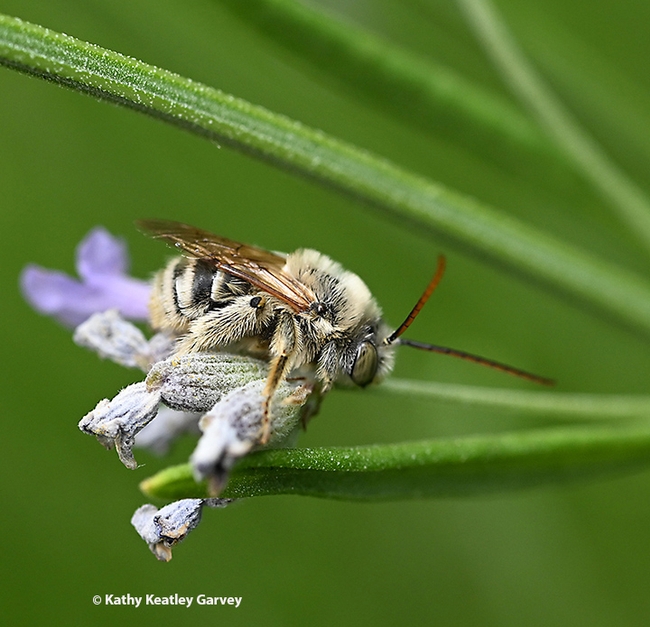Ever seen the male longhorned bees, Melissodes agilis, zipping around your garden, trying to bump all critters, large and small, off of "their" blossoms? They own them, ya' know.
These male bees are SO territorial. We've seen them target honey bees, bumble bees, carpenter bees, syrphid flies, spiders and praying mantises. And one another. Everything is fair game.
"They're saving the flowers for the females of their species, so they can mate with them," according to the late Robbin Thorp (1933-2019), UC Davis distinguished emeritus professor, Department of Entomology and Nematology.
But as dusk settles, there they are, the boys sleeping together in what Thorp called "The Boys' Night Out." The females return to their nests and the males "snuggle" together on lavender, sunflowers or whatever blossom suits them.
If you try to photograph them during the day when they're being territorial, you'll need to set your shutter speed at around 1/8000 of a second to freeze the action.
But if you try to photograph them at dawn or dusk when they're sleeping, it's so much easier. They begin to stir around dawn, as honey bees and bumble bees buzz by their sleeping quarters.
What's up, sleepy head?
Attached Images:

